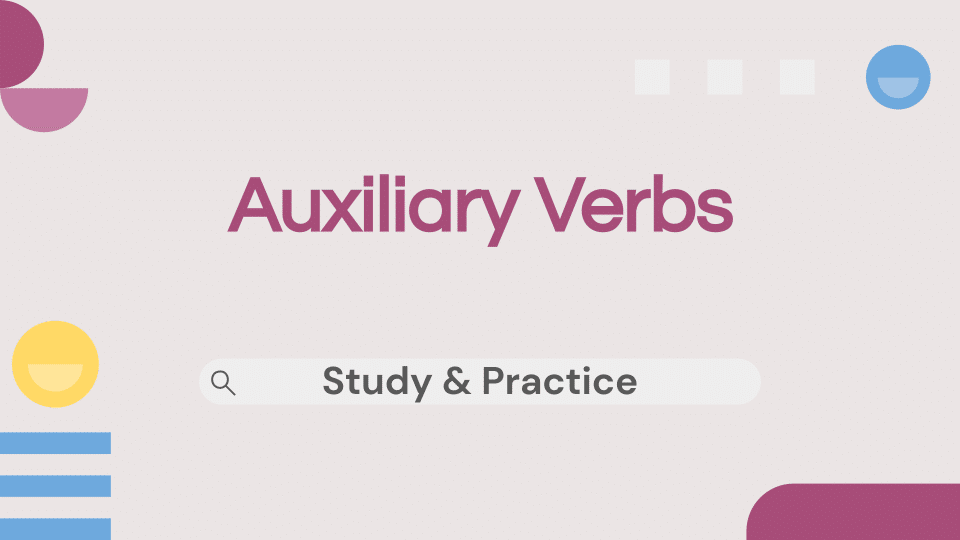
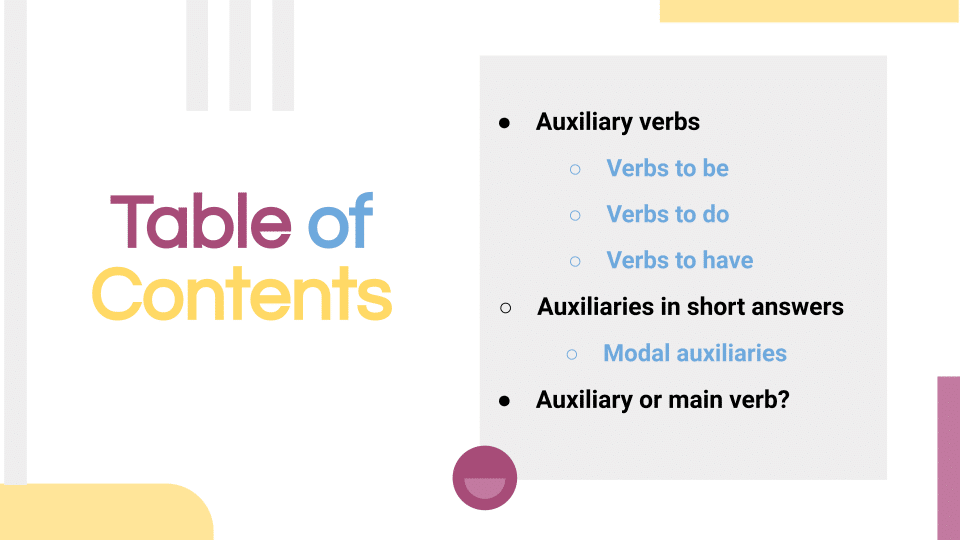
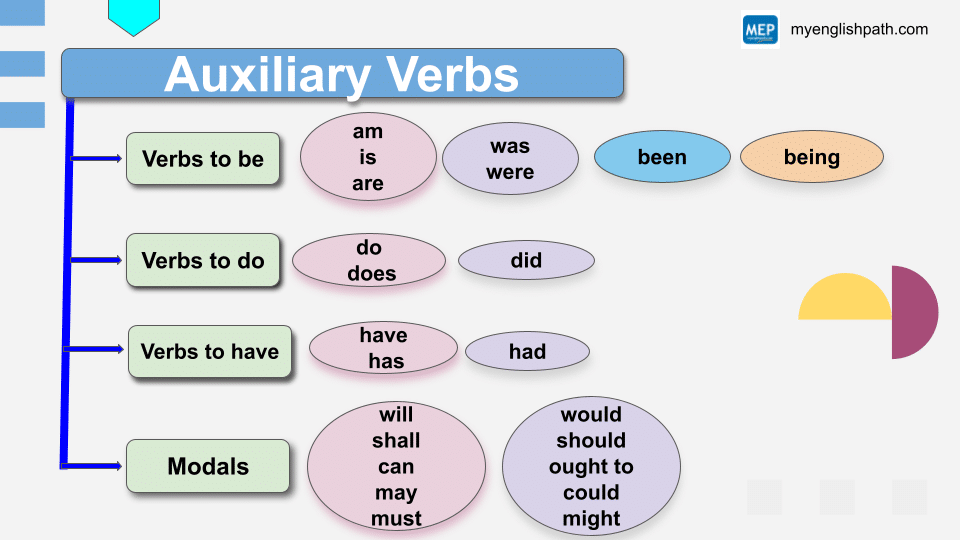
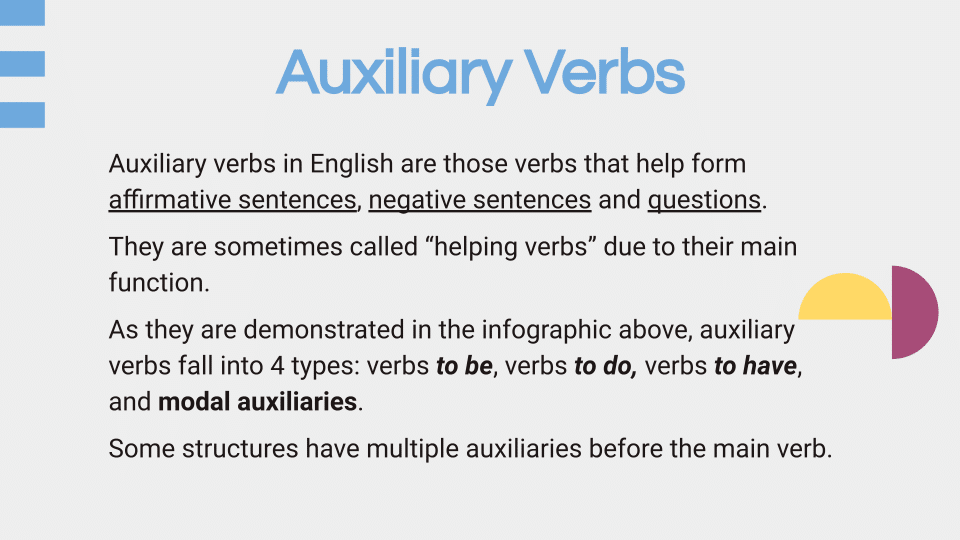
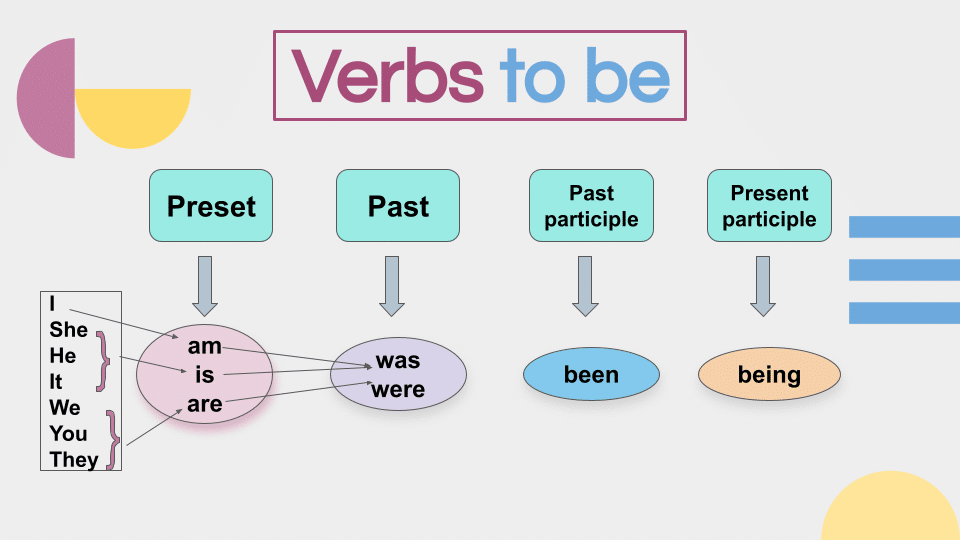
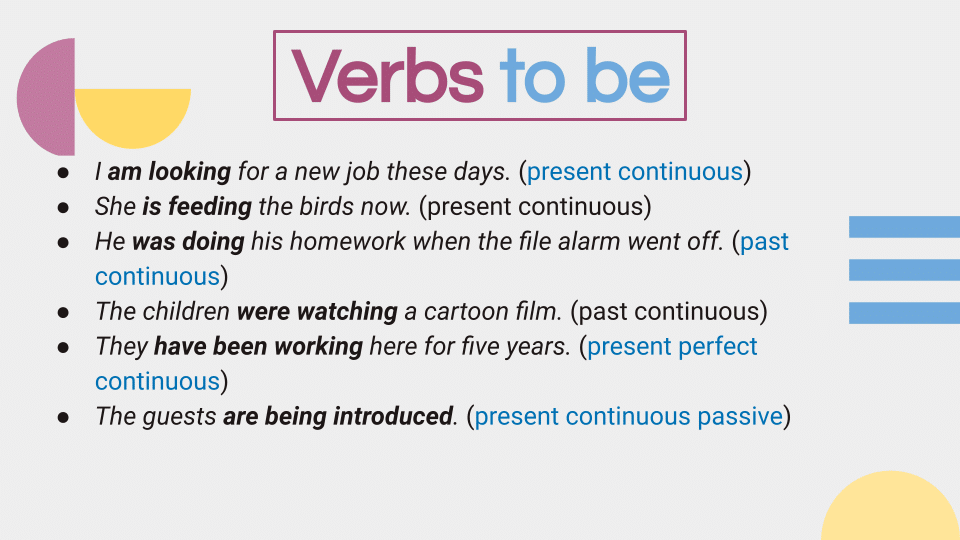
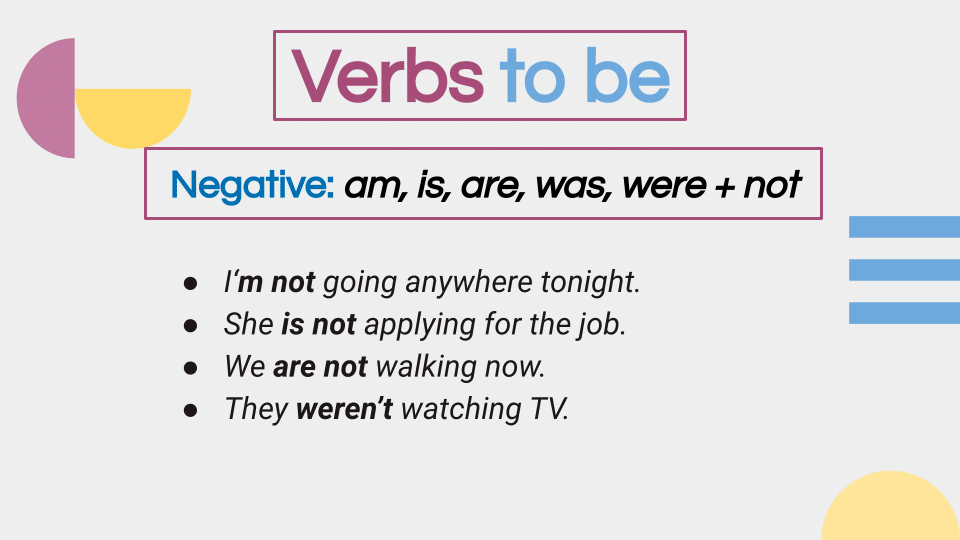
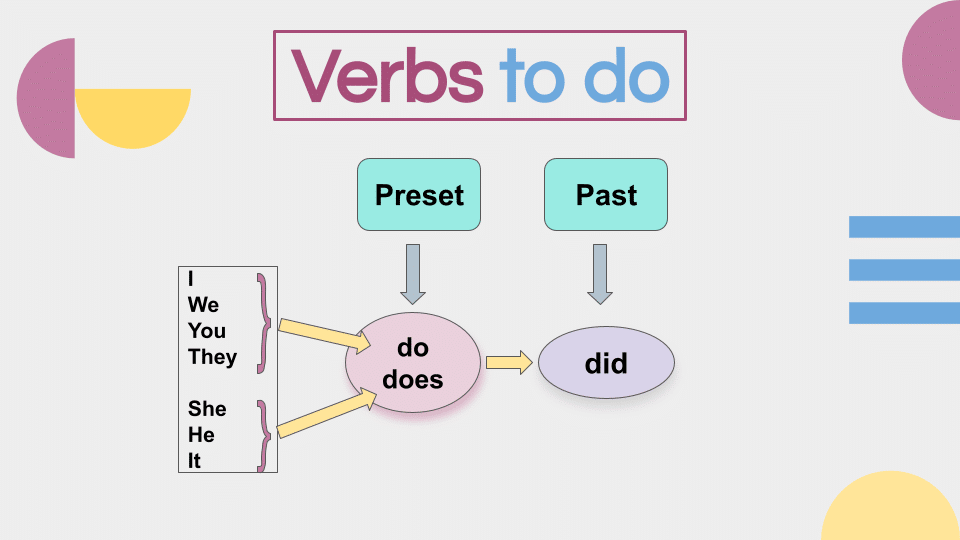
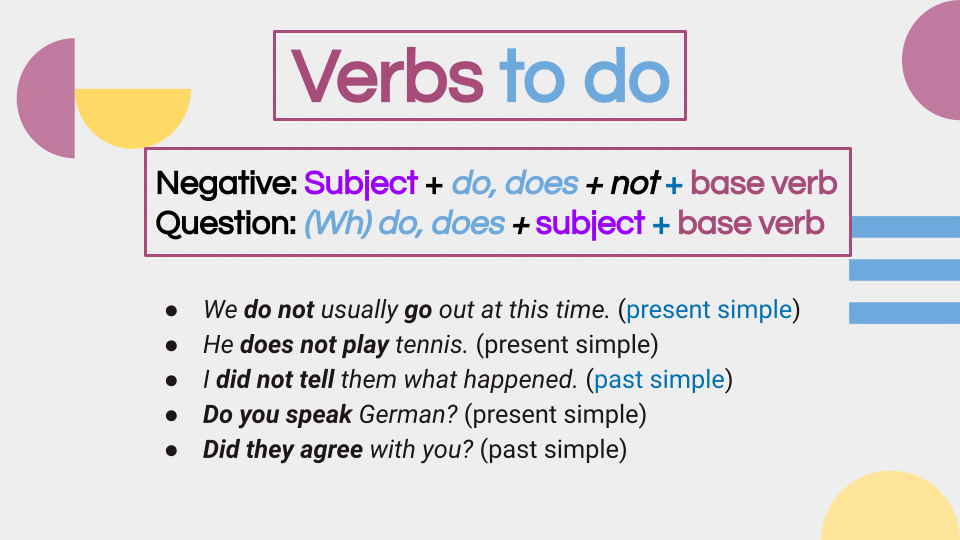
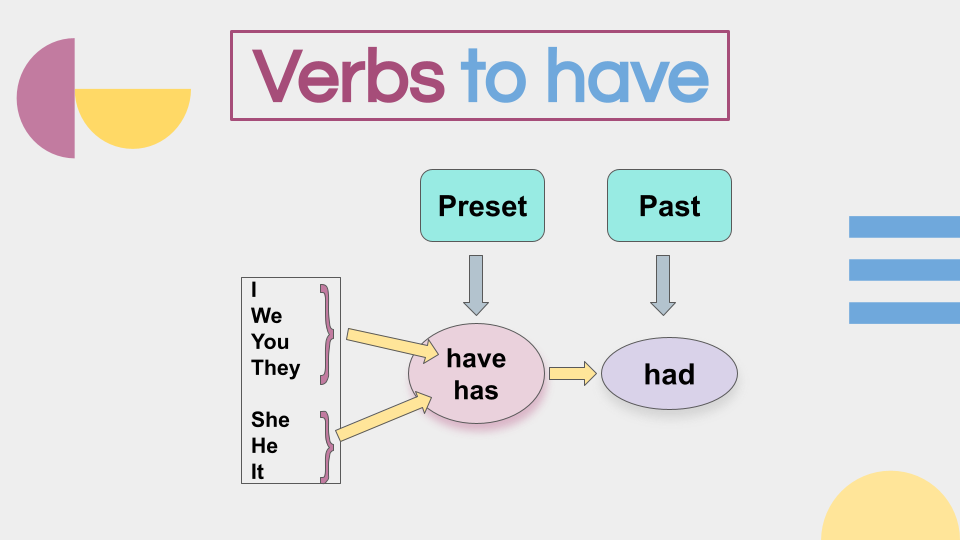
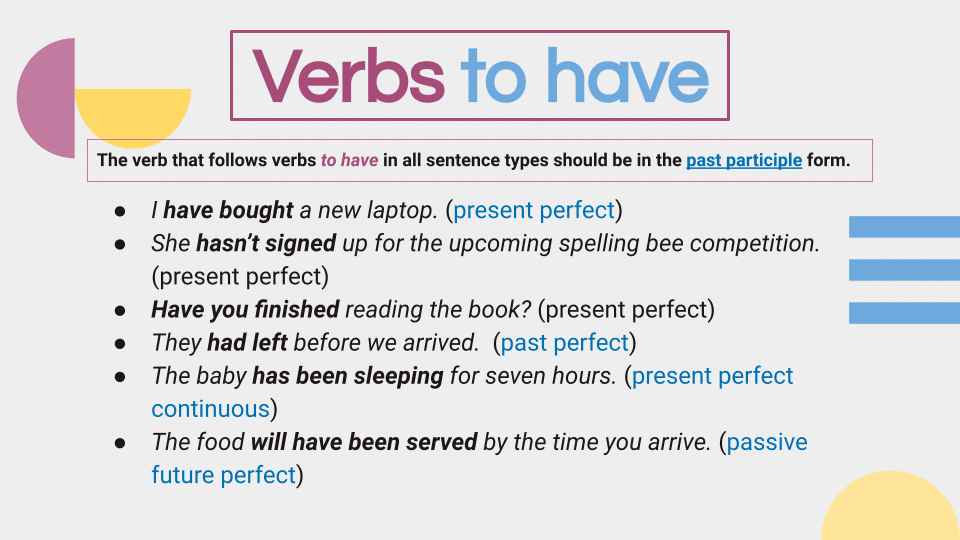
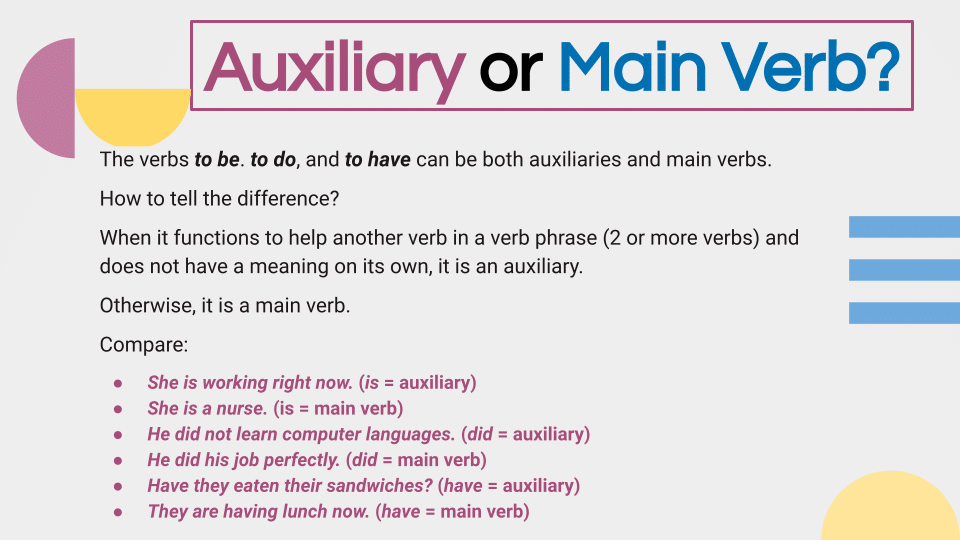
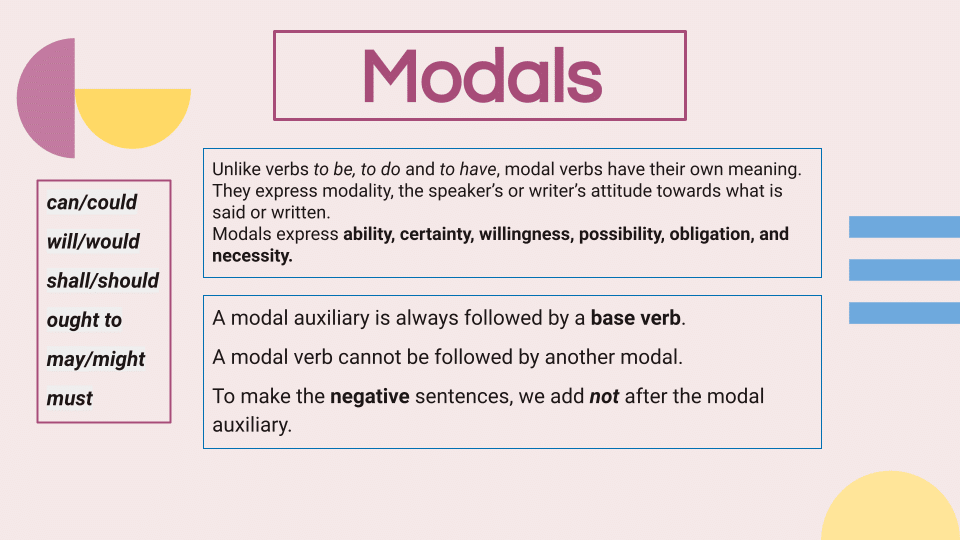
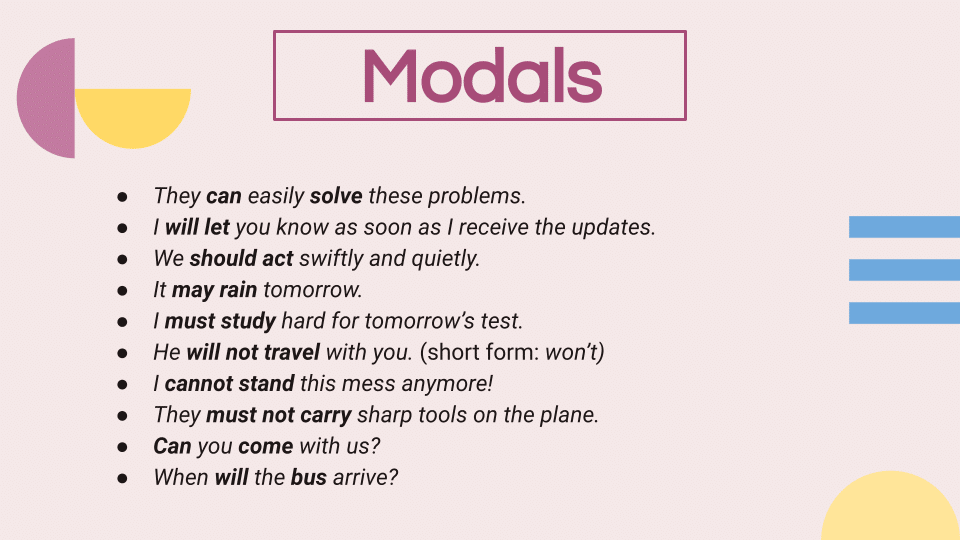
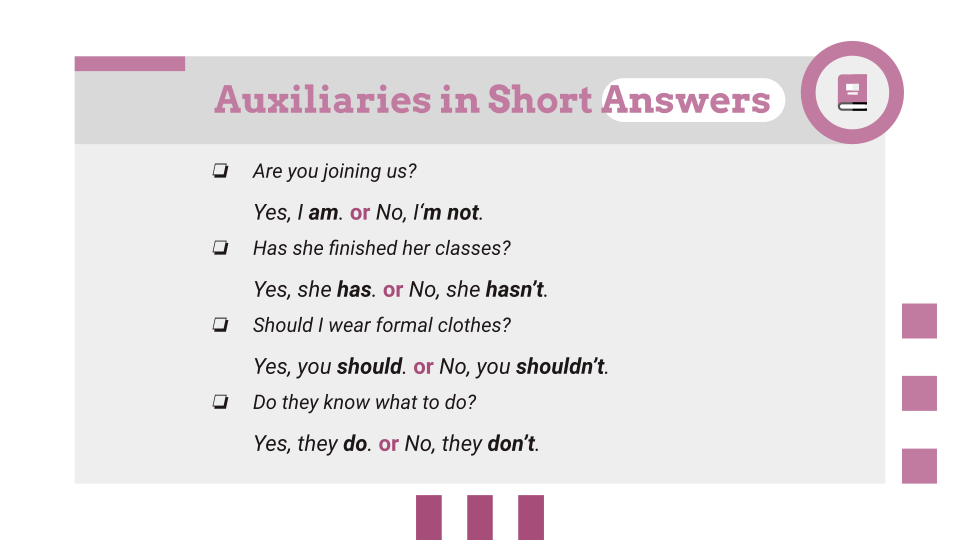

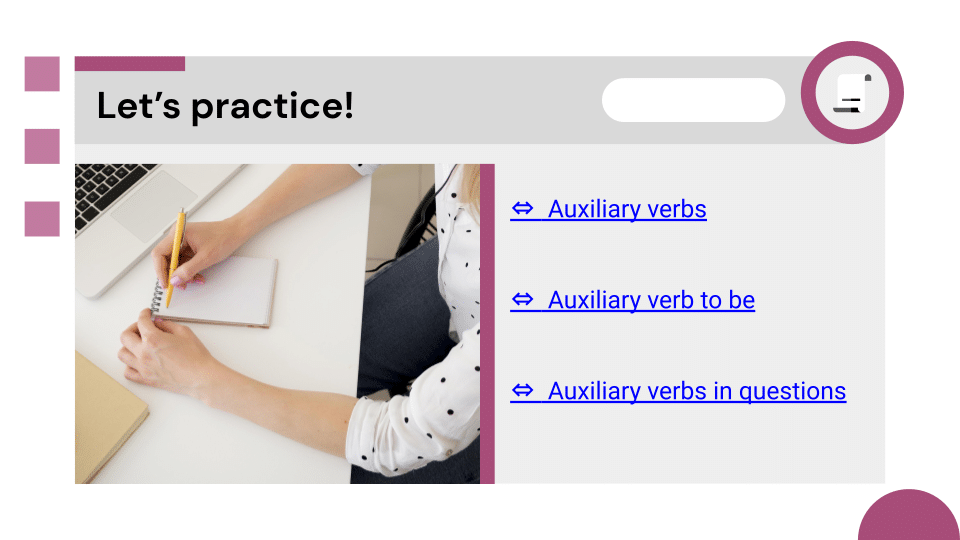
Table of Contents
Auxiliary verbs
Auxiliary verbs in English are those verbs that help form affirmative sentences, negative sentences and questions. They are sometimes called “helping verbs” due to their main function.
As they are demonstrated in the info-graphic above, auxiliary verbs fall into 4 types: verbs to be, verbs to do, verbs to have, and modal auxiliaries.
Some structures have multiple auxiliaries before the main verb.
Verbs to be
Verbs to be include:
am, is, are in the present
was, were in the past
been used in perfect tenses
being used in continuous tenses
Here are some examples of be verbs used in different tenses.
- I am looking for a new job these days. (present continuous)
- She is feeding the birds now. (present continuous)
- He was doing his homework when the file alarm went off. (past continuous)
- The children were watching a cartoon film. (past continuous)
- They have been working here for five years. (present perfect continuous)
- The guests are being introduced. (present continuous passive)
To make negative sentences, we add not (short form n’t) after the verbs to be: am, is, are, was and were.
- I‘m not going anywhere tonight.
- She is not applying for the job.
- They weren’t watching TV.
Verbs to do
Verbs to do include:
do in the present; with I, we, you, they
does in the present; with she, he, it
did in the past; with all subjects
These auxiliaries do not appear in affirmative sentences (except in emphatic sentences).
They are used to make negative sentences and questions in the present and past simple tenses.
The verb after do, does and did should be the base verb (infinitive without to).
- We do not usually go out at this time. (present simple)
- He does not play tennis. (present simple)
- Do you speak German? (present simple)
- I did not tell them what happened. (past simple)
- Did they agree with you? (past simple)
Verbs to have
Verbs to have include:
have in the present; with I, we, you, they
has in the present; with she, he, it
had in the past, with all subjects
The auxiliary verbs to have are used in perfect tenses affirmative sentences and are also used to make negative sentences and questions.
The verb that follows verbs to have in all sentence types should be in the past participle form.
- I have bought a new laptop. (present perfect)
- She hasn’t signed up for the upcoming spelling bee competition. (present perfect)
- Have you finished reading the book? (present perfect)
- They had left before we arrived. (past perfect)
- The baby hadn’t stopped crying until his mother came back. (past perfect)
- The baby has been sleeping for seven hours. (present perfect continuous)
- The food will have been served by the time you arrive. (passive future perfect)
Modal auxiliaries
Modal auxiliaries, like the other auxiliaries, ‘help’ the main verb in a sentence, but unlike verbs to be, to do and to have, modal verbs have their own meaning. They express modality, the speaker’s or writer’s attitude towards what is said or written.
Modal auxiliaries come before main verbs to express ability, certainty, willingness, possibility, obligation, and necessity.
A modal auxiliary is always followed by a base verb.
A modal verb cannot be followed by another modal.
To make the negative sentences, we add not after the modal auxiliary.
Modal auxiliaries include:
can/could
will/would
shall/should
ought to
may/might
must
- They can easily solve these problems.
- I will let you know as soon as I receive the updates. (short form:‘ll)
- We should act swiftly and quietly.
- It may rain tomorrow.
- I must study hard for tomorrow’s test.
- He will not travel with you. (short form: won’t)
- I cannot stand this mess anymore! (short form: can’t)
- They must not carry sharp tools on the plane. (short form: mustn’t) (Check the pronunciation of mustn’t here.)
The following verbs are called semi-modals:: dare and need.
The following phrases have modal meanings: used to,have to, have (got) to, be going to (similar to will), and be able to (similar to can).
Auxiliaries in questions
To make questions, we invert the order of the subject and auxiliary verb (to be, to have, modals).
We do not change the form of the main verb.
Affirmative: Subject + auxiliary + main verb
Question: Auxiliary + subject + main verb
Wh-word + auxiliary + subject + main verb
- They are playing chess. ⇒ Are they playing chess?
- He is wearing a hat. ⇒ What is he wearing?
- I was visiting my relatives. ⇒ Were you visiting your relatives?
- She has already left. ⇒ Has she left?
- We haven’t invited them. ⇒ Why haven’t you invited them?
- He can help you. ⇒ Can he help us?
- You should show your identity card. ⇒ Should I show my identity card?
In simple present and past affirmative sentences, there are no auxiliary verbs.
To make questions, we use do, does or did before the subject, and we use the base form of the main verb.
- I take my coffee before I go to work. ⇒ Do you take your coffee before you go to work?
- He wants an ice-cream, ⇒ What does he want?
- We spent the weekend in the countryside. ⇒ Where did you spend the weekend?
Auxiliaries in short answers
To give short answers to yes/no questions, it is not appropriate to only say “Yes” or “No.”
Rather, you should mention the subject and an auxiliary that agrees with the tense in the question.
In writing, add a comma after “Yes” and “No.”
- Are you joining us?
Yes, I am. or No, I‘m not.
- Has she finished her classes?
Yes, she has. or No, she hasn’t.
- Should I wear formal clothes?
Yes, you should. or No, you shouldn’t.
- Do they know what to do?
Yes, they do. or No, they don’t.
Auxiliary or main verb?
The verbs to be. to do, and to have can be both auxiliaries and main verbs.
How to tell the difference?
When it functions to help another verb in a verb phrase (2 or more verbs) and does not have a meaning on its own, it is an auxiliary.
Otherwise, it is a main verb.
Compare:
- She is working right now. (is = auxiliary)
- She is a nurse. (is = main verb)
- He did not learn computer languages. (did = auxiliary)
- He did his job perfectly. (did = main verb)
- Have they eaten their sandwiches? (have = auxiliary)
- They are having lunch now. (have = main verb)
For more details on the use of auxiliary verbs in different tenses, check verb tenses.
⇔ Take a quiz on auxiliary verbs.
